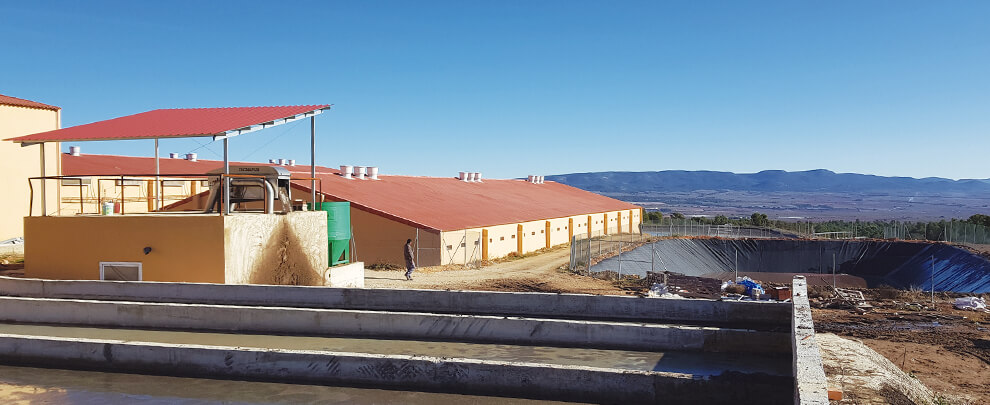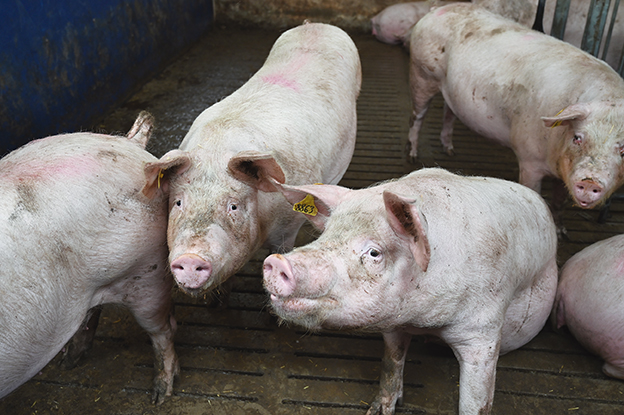Blog
Blog

How much is a cubic meter of slurry worth?
12th July 2022 - News
Óscar Toledano. Sales Manager & BI Rotecna.
For the vast majority of pig farmers, the management of slurry is an expense, which is paradoxical, since slurry is an excellent organic fertiliser. In fact, the nutrients of 1 m3 of slurry have a value of about 15 to 20 euros, well above their cost of useage, so they should generate income.
So, what makes it difficult for us to monetise this?
On the one hand, being made of approximately 95% water, the transport cost per fertiliser unit is 95 times higher than that of a commercial fertiliser, but that is compensated by being produced with crops. On the other hand, the specialisation of the primary sector has led to a disengagement between ranchers and farmers, so that farmers who do not produce slurry do not know its exact composition.
In addition, and despite being an organic fertiliser, most of the nutrients it contains are mineralised and dissolved in water. This makes it more appropriate for cover fertilization, when crops are in maximum growth and demand more nutrients, since, if it is applied in bottommost excess before planting, by the time crops need them, soluble nutrients have already leeched from the soil, so it can contaminate aquifers.
Finally, we insist on talking about slurry as a problem, so we reduce the perception of farmers’ perceived value, which does not answer to a decrease in the value of slurry as fertiliser or an excess of supply, since there are enough crops to apply all the produced slurry in an adequate and sustainable way.
So, what should we do to monetise this?
First, make efficient use of water to maximise the concentration of nutrients per unit of slurry and reduce its management costs. It is vital to check pacifiers and promote the use of drinking troughs with water level valves, which reduce seeming consumption by up to 50%.
Next, reduce emissions as much as possible, both in warehouses and during storage and application to on the one hand, not harm the environment and, on the other, to maximise the nutrients contained in the slurry once it comes in contact with the earth.
Subsequently, separate the liquid from the solid. This allows a reduction in the bulk of the liquid to be managed, which at the same time favours the homogenization of the resulting liquid portion, which will contain a greater proportion of nutrients quickly absorbed by crops. Thus, a smaller amount of land will be necessary for its management as a cover fertiliser, so that it can be applied to the closest lands, reducing costs, especially if it is done by fertigation.
The remaining solid portion contains a high concentration of nutrients and organic matter, making it a high-value product easy to transport, especially if composted and is an excellent background fertiliser that significantly improves soil characteristics by contributing a greater contribution of organic matter.
On the other hand, you must have an adequate storage capability for both phases, since the application is seasonal and depends on the area and the needs of the crops. During storage, it is advisable to compost the solid phase, which will reduce its volume, concentrating nutrients, stabilising them, increasing their value and reducing the cost of transport and application.
As for the application, it must be characterised to know the amount of each nutrient in its composition, to be able to dose exactly the amount of nutrients that the crop needs. Currently, there are very economical and quite accurate systems that allow knowing the concentration of nutrients of the liquid phase by conductimetry each time they are applied.
In addition, we must apply it at the right time and with the right system: the bottom solid before planting, the liquid in coverage. It should be kept in mind that, to apply fertilisers under covering, the ideal is to fertilise and, if there is no irrigation, use systems that allow entering the fields when the crops are growing.
We must also inform farmers of the benefits of using slurry, and how to apply it properly to maximise crop productivity and avoid environmental problems.

The pig sector works to reduce the volume of manure. Photo: Rotecna.
Finally, we must bear in mind that the European Commission is promoting a measures package under the title of “The Green European Pact”, to promote a more efficient use of resources, with the aim of becoming the first neutral continent in emissions by the year 2050. Within these measures, it is envisaged to reduce the use of fertilisers of extractive and synthetic origin by 20 % and to stimulate the sustainable development of organic products’ supply by 2030, from 8 % of the total amount of crops under current organic farming to 25 %, which may be modulated through the CAP.
This will encourage the demand for organic fertilisers, so the value of each unit of organic compost will be higher than that of synthetic or extractive fertilisers, especially those that can be used for crops of organic products, as is the case of fertilisers from the valorization of solid fractions of slurry. In addition, the current situation suggests that commercial fertilisers will continue to steadily increase in price in the coming years.
If we use the right management model, we can reduce the implementation cost and increase the value delivered to farmers, even above that provided by the fertilisers they currently use, so if we do it correctly, there is no reason why we cannot charge them for the fertiliser we supply them.
It is vital for the sector that we move in this direction, both to increase our environmental and economic sustainability, and to ensure our survival.






